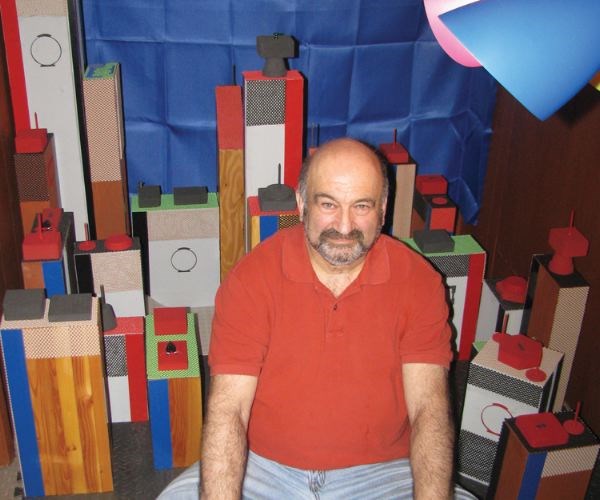When the Iranian revolution happened in 1979, it was the final gasp in the architectural aspirations of Rolan Abraham.
He and his brother were hastily sent away from the nation in upheaval by their concerned parents. He had already gone through the mandatory military service for all Iranian youth of that period, he had completed his vocational high school programs in which he focused on the building of structures, a passion he'd enjoyed since boyhood, but personal safety was the family's priority.
Abraham's parents gave the boys a choice of three countries to which they could flee: Australia, America and Canada. With little other information to go on, Abraham looked at the respective flags of the destination countries.
"I saw the clean design, the maple leaf, the red and white colours, I thought it was a strong, simple image and that is what made me decide Canada," said Abraham, who has lived in many regions of this country since then, and finally settled on Prince George after a stint in Mackenzie as a security guard.
He was securing the perimeter of the Wood Innovation & Design Centre when he noticed interesting wood shapes being discarded from the cuttings of the construction. Watching the groundbreaking wooden structure be erected was inspiration for his latent architectural instincts, he was a crafter by hobby, so that construction garbage pushed him into an art project now on display at Art Space - an exhibition he calls City Of The Future.
"Always, I'm thinking about architecture. And I love wood," said Abraham. "Wood is life. Wood gives energy, it is made of energy. I had it come to mind to use the scraps of this beautiful wood building to show what wood cities will look like one day."
The blocks, all of them modular, some of them with angles, were adorned and arranged into a miniature urban landscape by Abraham. At a glance, it looks like little more than a toy town but when the recycling and environmental implications are factored in, he has made a model of a green-focused society.
"I love science fiction," said Abraham, with his apartment adorned with signed photos of sci-fi stars Tia Carrere, Michael Hogan, Jewel Staite, and a portrait of him together with his boyhood TV hero William Shatner.
He spent his boyhood struck by the storylines of Star Trek, V, Star Wars, Bonanza and other such tales of cowboys and aliens. The idea of space travel, futuristic technologies, and the human yearn to explore are still close to his mental surface.
Some of that was involved in the art.
"I wonder and research about future construction, future fuels, future energy sources, transportation," he said. "Buildings are so important. They are the shape of society itself."
He makes his point stronger by offering nothing for sale. His Art Space exhibition has no price tags anywhere. He does sell craft projects like puzzles he puts together then mounts into frames. But the models of his urban imaginings - each neighbourhood named for letters of the Greek alphabet - are to tell a tale, not retail.
"I want people to think about how we are going to live, how cities will change, what material like wood can do. Look in Prince George. It's 100 years old, now. You see the new RCMP building, the Wood Innovation & Design Centre, it's the change we needed. Some people are afraid to change, want everything to stay the same, all their life.
"But technology and tools always change, all of life changes."
Abraham used no tools but simple household ones to construct his city of the future. He couldn't shape the wood much because in his compact apartment he has no saws or lathes or drill presses. He said his art would have looked different - more curves and fewer angular hard-lines - had he the equipment but that, too, was emblematic of humanity's relationship with architecture.
The exhibition can be seen at Art Space (upstairs at Books & Company) until Wednesday.



